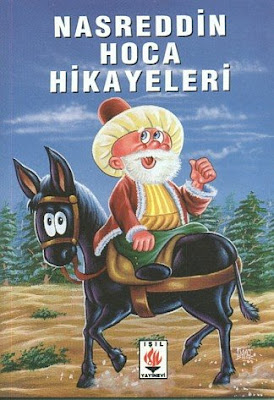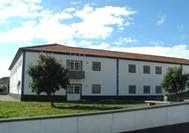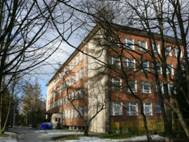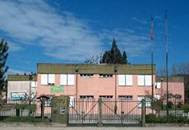Sunday 21 June 2009
Monday 25 May 2009
The end of the story - Martinlongo - Primary school
Publicada por
Natividade
em
25.5.09
0
comentários
![]()
![]()
Friday 22 May 2009
Saturday 2 May 2009
A travel to our island and to our school - Corvo Island
Publicada por
Deolinda Estêvão
em
2.5.09
0
comentários
![]()
![]()
Friday 1 May 2009
Project Meeting in Portugal
This visit enabled teachers to share both activities and work done in our schools and enabled staff to build bonds of friendship and effective relationships that will make this project move forward.
In the next month we will work to finish our task. The Common Story “BIG BUTTERFLY´S RACE” is now in Medas and will be finished by Martinlongo School.
Good work!
Publicada por
Deolinda Estêvão
em
1.5.09
0
comentários
![]()
![]()
Thursday 30 April 2009
Sunday 26 April 2009
Dede Korkut
 The Book of Dede Korkut, also spelled as Dada Gorgud, Dede Qorqut or Korkut-ata (Turkish: Dede Korkut Kitabı, Azerbaijani: Kitabi Dədə Qorqud, Russian: Китаби деде Коркуд, Turkmen: Gorkut-ata), is the most famous epic story of the Oghuz Turks (also known as Turkmens or Turcomans). The book's mythic narrative is part of the cultural heritage of Turkic states some of those are Turkiye, Azerbaijan and Turkmenistan, as well as to a lesser degree Kazakhstan and Kyrgyzstan.
The Book of Dede Korkut, also spelled as Dada Gorgud, Dede Qorqut or Korkut-ata (Turkish: Dede Korkut Kitabı, Azerbaijani: Kitabi Dədə Qorqud, Russian: Китаби деде Коркуд, Turkmen: Gorkut-ata), is the most famous epic story of the Oghuz Turks (also known as Turkmens or Turcomans). The book's mythic narrative is part of the cultural heritage of Turkic states some of those are Turkiye, Azerbaijan and Turkmenistan, as well as to a lesser degree Kazakhstan and Kyrgyzstan.Various dates have been proposed for the epic. Geoffery Lewis dates it fairly early in the 15th century with an older substratum of these oral traditions dating to conflicts between the ancient Oghuz and their Turkish rivals in Central Asia (the Pecheneks and the Kipchaks). However, according to him, this substratum has been clothed in references to the 14th-century campaigns of the Akkoyunlu Confederation. Cemal Kafadar mentions that it was no earlier than the 15th century based on the fact that the author is buttering up both the Akkoyunlu and Ottoman ruler. Stanford Jay Shaw (1977) in his history of the Ottoman empire dates it in the 14th century. Professor Michael E. Meeker believes that the stories and songs have emerged no earlier than the beginning of the 13th century and were written down no later tha the beginning of the 15th century. Some scholars in Azerbaijan and Turkmenistan place it in the eighth century. A precise determination is impossible to come by due to the nomadic lifestyle of the early Turkic people, where epics such as Dede Korkut were passing from generation to generation in an oral form. This is especially true of an epic book such as this, which is a product of a long series of narrators, any of whom could have made alterations and additions, right down to the two sixteenth-century scribes who authored the oldest extant manuscripts.The majority of scholars of ancient Turkic epics and folk tales, such as Russian-Soviet academician Vasily Bartold and British scholar Geoffrey Lewis, believe that the Dede Korkut text "exhibits a number of features characteristic of Azeri, the Turkish dialect of Azerbaijan".
The epic tales of Dede Korkut is one of the best known Turkic dastans from among a total of well over 1,000 recorded epics among the Mongolian and Turkic language families by international scholars.
from wikipedia...
http://en.wikipedia.org/wiki/Book_of_Dede_Korkut
Publicada por
AySu Unlu Mamuller
em
26.4.09
0
comentários
![]()
![]()
Tuesday 21 April 2009
Who is He?
The monument was built on the left-bank of the Tagus river, facing Lisbon on the other bank. Its location is at coordinates 38º40'43" N 9º10'17" W, in the civil parish of Pragal, in the city of Almada, in District of Setúbal, Lisbon Region. It is a national monument.
The base of the monument, by architect António Lino, is in the form of a gate, standing 75 m (246 ft) tall. At the top is a statue of Christ the Redeemer, designed by sculptor Francisco Franco de Sousa, 28 m (92 ft)-tall. At the base of the statue is an observation deck (altitude: 184 m / 604 ft) providing panoramic views of the city of Lisbon, the Tagus river (in portuguese: Rio Tejo) and of the 25 de Abril Bridge (in portuguese: Ponte 25 de Abril). It is located on the left riverbank.
Publicada por
AySu Unlu Mamuller
em
21.4.09
0
comentários
![]()
![]()
Nasreddin Hodja
 Nasreddin Hodja (Hoca) is a 13th century Turkish personage who is believed to have lived in Aksehir in south-central Turkiye. About 400 handwritten manuscripts that narrate anecdotes demonstrating his quick wit and wisdom have survived. Hodja was clearly a beloved character whose advise and opinion the townspeople solicited and respected. They also loved to test his wit by playing mischievous games on him or by asking him absurd questions. Hodja was often victim to the practical jokes of children and adults, who wanted to see how he would get himself out of trouble. But Nasreddin Hodja, to the delight of his fellow villagers, was never stumped to deliver a witty one-liner.
Nasreddin Hodja (Hoca) is a 13th century Turkish personage who is believed to have lived in Aksehir in south-central Turkiye. About 400 handwritten manuscripts that narrate anecdotes demonstrating his quick wit and wisdom have survived. Hodja was clearly a beloved character whose advise and opinion the townspeople solicited and respected. They also loved to test his wit by playing mischievous games on him or by asking him absurd questions. Hodja was often victim to the practical jokes of children and adults, who wanted to see how he would get himself out of trouble. But Nasreddin Hodja, to the delight of his fellow villagers, was never stumped to deliver a witty one-liner.Hodja, so-called for his wisdom (in Turkish "hoca" means both teacher and religious leader, both of whom are supposed to be knowing men), was sometimes an imam, leading prayers and other religious ceremonies, and sometimes a kadi, resolving local disputes. But he was, first and foremost, a small farmer who had a few live stock and a small land to cultivate. He is hard-working and honest, however, he is not immune to little cheatings every now and then. He is often poor. He and his family live very modestly, and from time to time they even suffer from abject poverty where there is no food or fire to keep them warm. Nasreddin Hodja is willing to do any job to support his family. Tough times make him sarcastic, but he maintains his sense of humour and optimism.
Publicada por
AySu Unlu Mamuller
em
21.4.09
0
comentários
![]()
![]()
Friday 10 April 2009
Cultural challenges
Cultural challenges from Medas, 9 B class (Albino Santos class)
10 questions about Portugal - quizz N.º 1 - interactive version
10 questions about Portugal - quizz N.º 1 - PowerPoint version
10 questions about Portugal - quizz N.º 2 - PowerPoint version
10 questions about Portugal - quizz N.º 3 - PowerPoint version
Publicada por
Natividade
em
10.4.09
0
comentários
![]()
![]()
Thursday 2 April 2009
BIG BUTTERFLY´S RACE
 The common story, made by schools from Slovakia, Turkiye and Corvo, is in the files of our EDL Group (Yahoo
The common story, made by schools from Slovakia, Turkiye and Corvo, is in the files of our EDL Group (Yahoo
Group).
Big Butterfly
turkiye
Big Butterfly Race - Ebims - 9 Grade
Good work to Martinlongo and Medas.
Publicada por
Deolinda Estêvão
em
2.4.09
0
comentários
![]()
![]()
Saturday 28 March 2009
What is this?
 According to the Ali Muhiddin Hacı Bekir Confectioners company of Istanbul, founded in 1777, it has been produced in Turkiye since the 15th century. Originally, honey and molasses were used as sweeteners, and water and flour were the binding agents.
According to the Ali Muhiddin Hacı Bekir Confectioners company of Istanbul, founded in 1777, it has been produced in Turkiye since the 15th century. Originally, honey and molasses were used as sweeteners, and water and flour were the binding agents.
The recipe for it as we know it today, using the new ingredients of sugar and starch, was invented and popularized by the Hacı Bekir company during the 19th century.
It was introduced to the West in the 19th century. An unknown Briton became very fond of the delicacy during his travels to Istanbul, and purchased cases of it. It became a major delicacy not only in Britain, but throughout Continental.
Publicada por
AySu Unlu Mamuller
em
28.3.09
0
comentários
![]()
![]()
Monday 23 February 2009
Where is this?
 Famous in particular for its massive dome, it is considered the epitome of Byzantine architecture. It was the largest cathedral in the world for nearly a thousand years, until the completion of the Seville Cathedral in 1520. The current building was originally constructed as a church between A.D. 532 and 537 on the orders of the Byzantine Emperor Justinian, and was in fact the third Church of the Holy Wisdom to occupy the site (the previous two had both been destroyed by riots). It was designed by two architects, Isidore of Miletus and Anthemius of Tralles. The Church contained a large collection of holy relics and featured, among other things, a 50 foot (15 m) silver iconostasis. It was the patriarchal church of the Patriarch of Constantinople and the religious focal point of the Eastern Orthodox Church for nearly 1000 years.
Famous in particular for its massive dome, it is considered the epitome of Byzantine architecture. It was the largest cathedral in the world for nearly a thousand years, until the completion of the Seville Cathedral in 1520. The current building was originally constructed as a church between A.D. 532 and 537 on the orders of the Byzantine Emperor Justinian, and was in fact the third Church of the Holy Wisdom to occupy the site (the previous two had both been destroyed by riots). It was designed by two architects, Isidore of Miletus and Anthemius of Tralles. The Church contained a large collection of holy relics and featured, among other things, a 50 foot (15 m) silver iconostasis. It was the patriarchal church of the Patriarch of Constantinople and the religious focal point of the Eastern Orthodox Church for nearly 1000 years.
In 1453, Constantinople was conquered by the Ottoman Turks and Sultan Mehmed II ordered the building to be converted into a mosque. The bells, altar, iconostasis, and sacrificial vessels were removed, and many of the mosaics were eventually plastered over. The Islamic features — such as the mihrab, the minbar, and the four minarets outside — were added over the course of its history under the Ottomans. It remained as a mosque until 1935, when it was converted into a museum by the Republic of Turkiye.
Publicada por
AySu Unlu Mamuller
em
23.2.09
0
comentários
![]()
![]()
Sunday 22 February 2009
Where is it?
During the school year the streets and lanes are full of students. They have moved among the colleges, libraries and auditoriums for 800 years.
At the beginning of 12th century the first school came into existence here because the students were forbidden to study in Paris. Firstly this University did not have its own buildings. The students and their masters were living in the town and they were meeting in some rooms or “under the open sky”. Later the first colleges were built. It was in 13th century. Every college had a chapel and a big dining room where all the members of the college were having dinner together.
In about 1 500 younger boys were admitted to the school – the boys at the age of 12 – 13 years. They were educated for the church, the law or for the state service. Now the field of study´s offer is several tens – from Information Technology to Egyptology.
In 1878 – 1879 the first girl college was established here. In spite of it the women had to wait till the year 1920 to get the full membership at the University.
There are the University buildings from 13th to 20th century the part of medieval town. The visitors can admire architecture of individual periods in historical continuities. But it is impossible to find large University campus.
The movies Alice in Wonderland and Harry Potter were filmed here.


Publicada por
Deolinda Estêvão
em
22.2.09
0
comentários
![]()
![]()
Tuesday 3 February 2009
Try this game...
 Click here and you can learn some Slovak words. Have fun with the Slovakian Language!
Click here and you can learn some Slovak words. Have fun with the Slovakian Language!
Publicada por
Deolinda Estêvão
em
3.2.09
0
comentários
![]()
![]()
Thursday 8 January 2009
January to May Activities
 Children will prepare and exchange cultural challenges (keywords, pictures and questions such as: Who is this? Where is this? …..
Children will prepare and exchange cultural challenges (keywords, pictures and questions such as: Who is this? Where is this? …..
Publicada por
Deolinda Estêvão
em
8.1.09
0
comentários
![]()
![]()
Wednesday 7 January 2009
Thursday 1 January 2009
Christmas Dictionary
See another version with exercises
Publicada por
Deolinda Estêvão
em
1.1.09
0
comentários
![]()
![]()





































